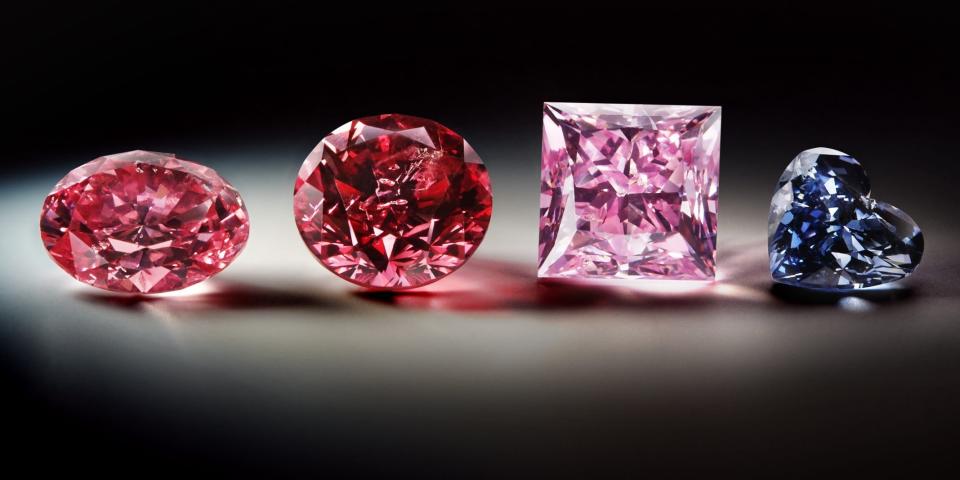Australia's rare pink-diamond mine formed from the clashing and stretching of continents, a new study found. The discovery could lead to more colorful diamonds.
A study found that Australia's tectonic plates stretched, creating large deposits of pink diamonds.
Pink diamonds are made under extreme pressure when two continents collide.
The scientists hope that understanding this will help them find new hotspots for colorful diamonds.
The world's largest source of natural pink diamonds, Australia's Argyle mine, closed in 2020. However, researchers think they have an idea of where to find more rich sources of pink diamonds.
Turns out, pink diamonds form under even more intense conditions than traditional clear diamonds. And understanding those conditions could help diamond miners identify new sites.
Normally, diamonds turn up in a type of volcanic rock called kimberlite deep underground. For kimberlite to reach the surface usually requires the tearing apart of continental plates.
But that's not the case for the colorful diamonds that came out of Argyle, according to a new study published in Nature Communications on Tuesday.
How pink diamonds form

For the study, researchers from the University of Curtin suggest that it wasn't continental separation but rather a continental collision that turned the diamonds pink, followed by continental stretching that transported them from deep underground in Earth's mantle to the surface.
"As long as these three ingredients are present - deep carbon, continental collision, and then stretching — then we think it will be possible to find the 'next Argyle'," Hugo Olierook, lead researcher of the study, said in the University's press release.
The researchers used lasers thinner than the width of a human hair to analyze rocks from Argyle, per the press release. Using this information, they discovered when the diamonds turned pink and how they got to the surface.
Australia, as we know it, formed about 1,800 million years ago when two subcontinents smashed into each other, per the study. The pressure from this event twisted the internal structure of the diamonds, turning them pink and brown.
"That sort of collision creates a damaged area or 'scar' in the land that will never fully heal," Olierook said in the press release.
Some 500 million years later, that scar was stretched as the ancient continent Nuna broke up. This stretching broke holes open in the Earth's crust, which allowed the pink diamonds to rise up to Earth's surface, where a group of geologists would eventually discover them in 1979.
How to find more pink diamonds

The Argyle mine closed in 2020 when its costs began to outpace its diamond output. "Argyle has run dry. Every mine has what's called its mine life after which it is no longer economically viable," Anna Cisecki from the Australian Diamond Portfolio told Stockhead in 2021.
Though pink diamonds have been found in Angola and India, Argyle was by far the most prolific site — 90% of the world's pink diamonds came from it.
The researchers told Nature that understanding the sort of goldilocks conditions that created Argyle may help in the search for other areas rich with the precious gems.
After all, there is financial incentive behind finding a second Argyle — pink diamonds have sold for as much as $71 million dollars, according to Forbes.
Even with these new parameters, the search for a pink diamond hotspot isn't a sure thing, and will likely require a lot of luck, Olierook told LiveScience.
Read the original article on Business Insider

 Yahoo News
Yahoo News 
